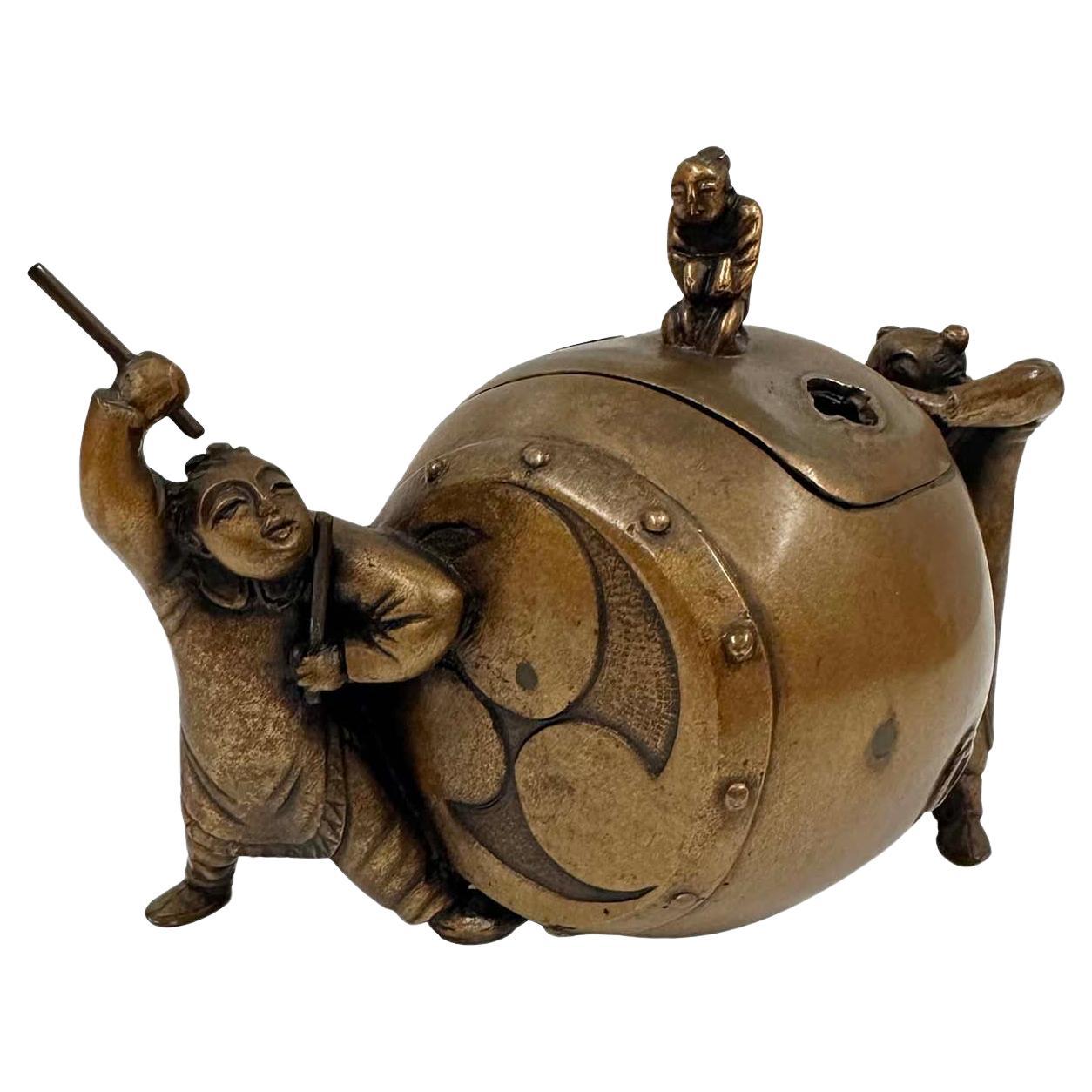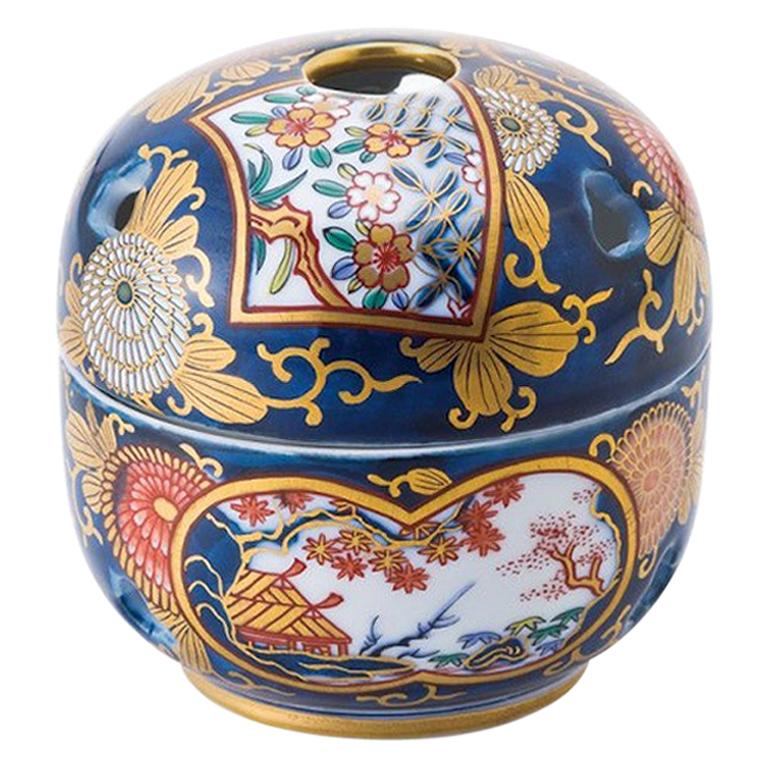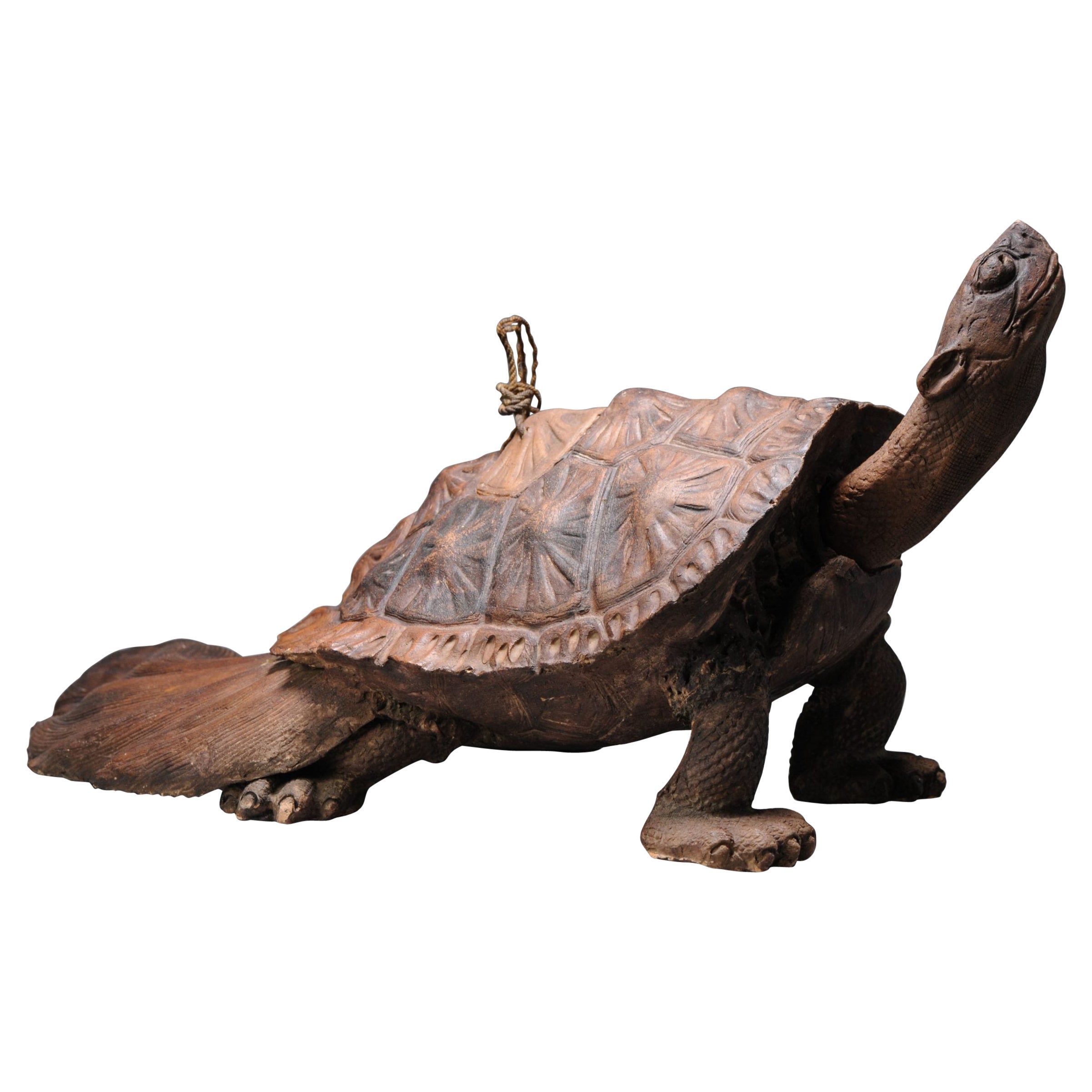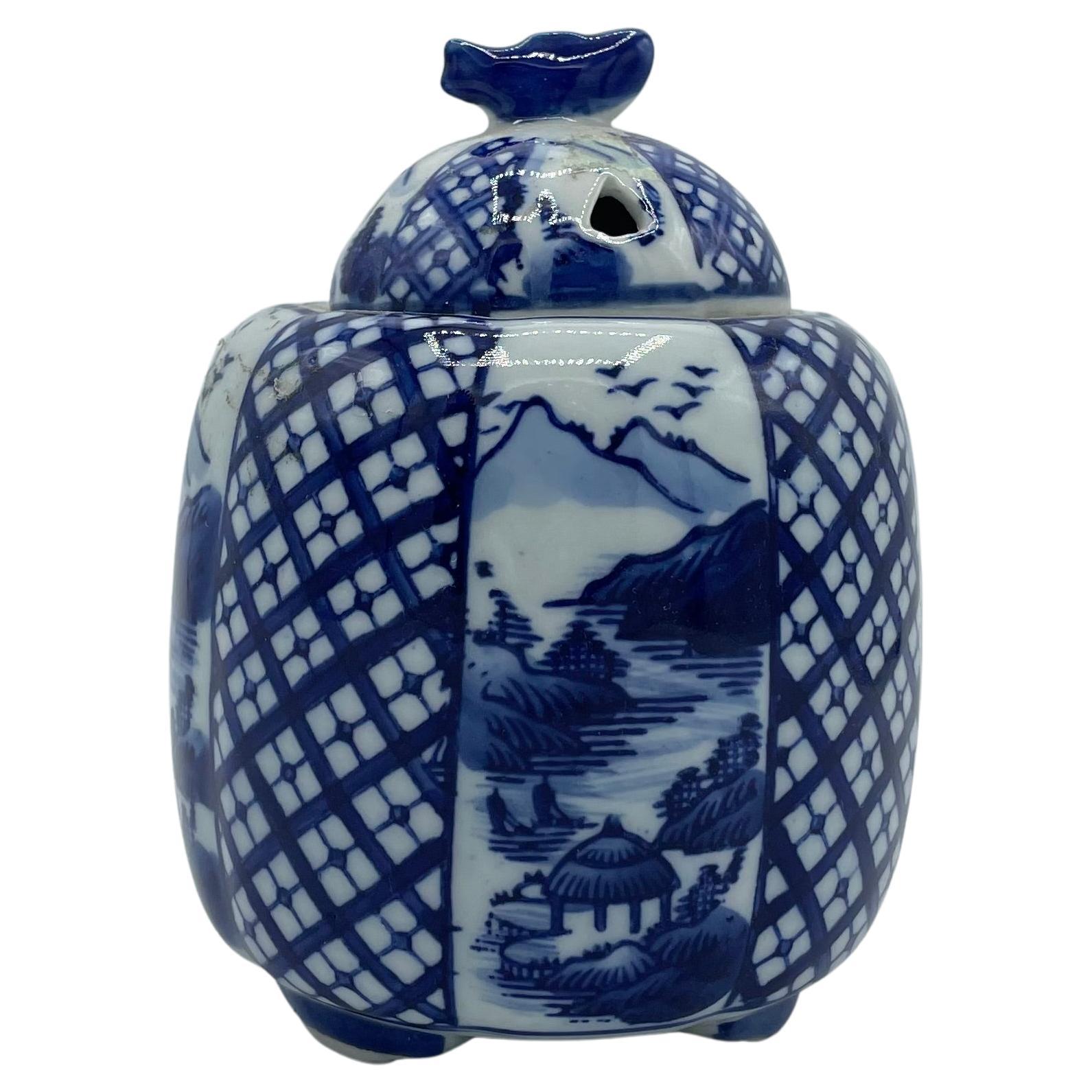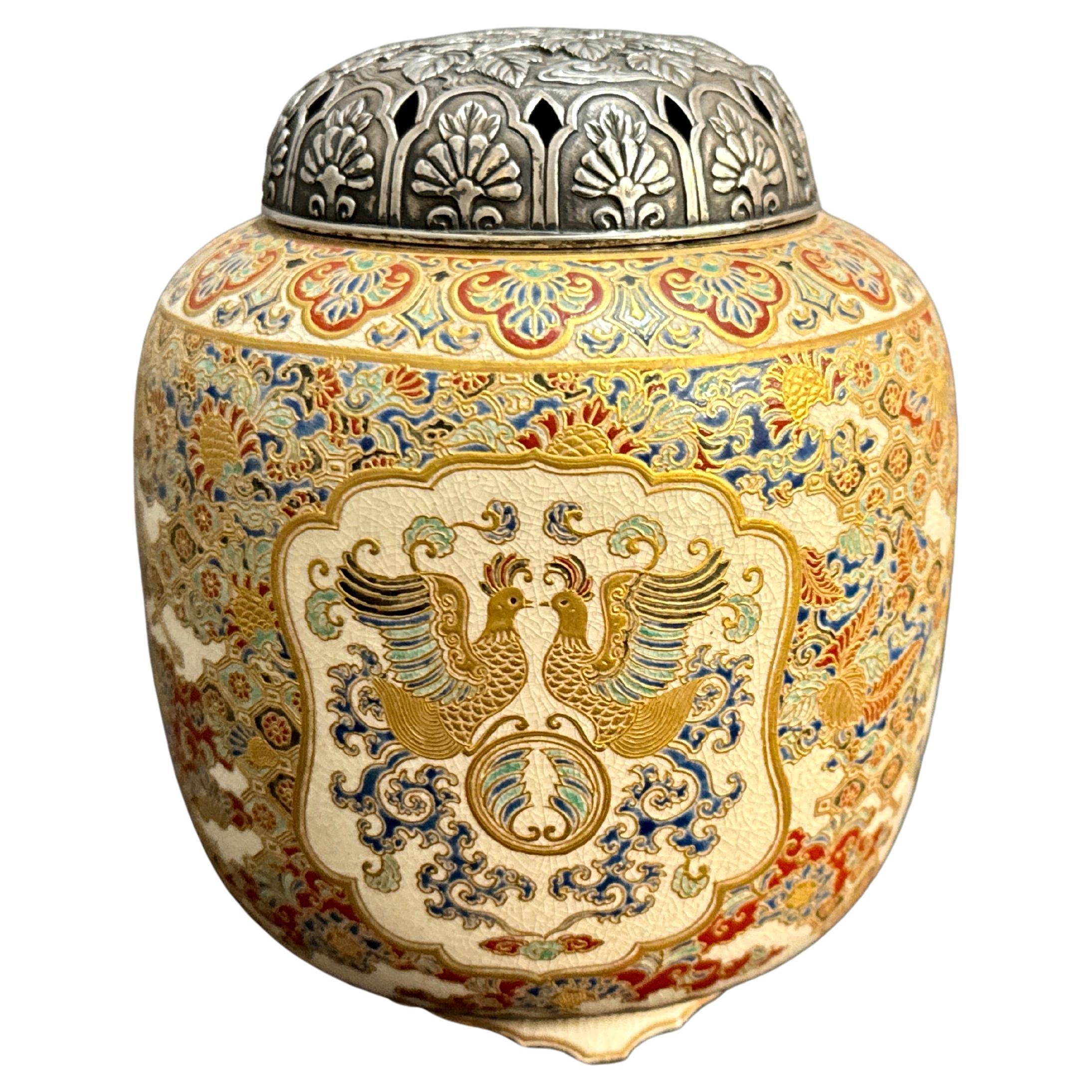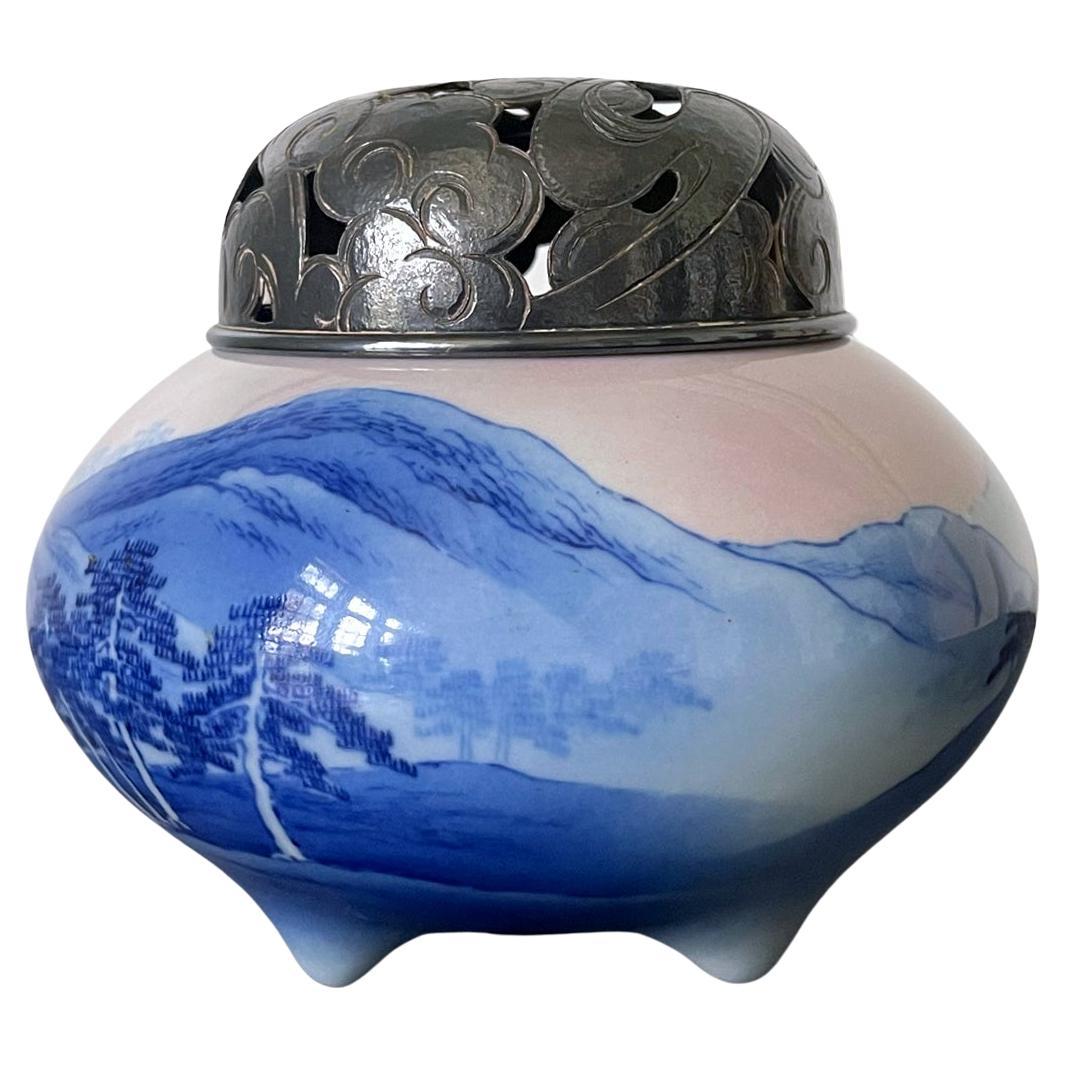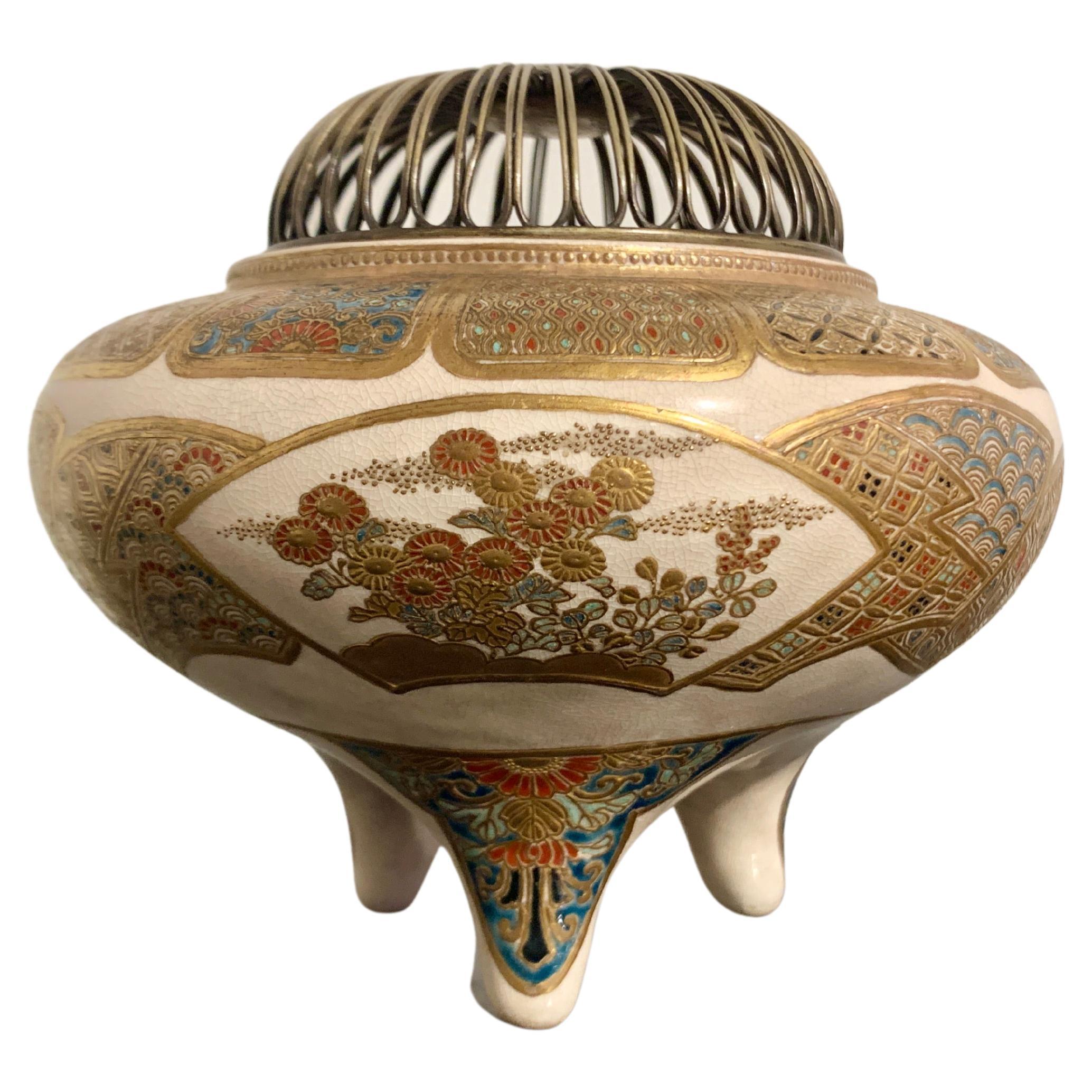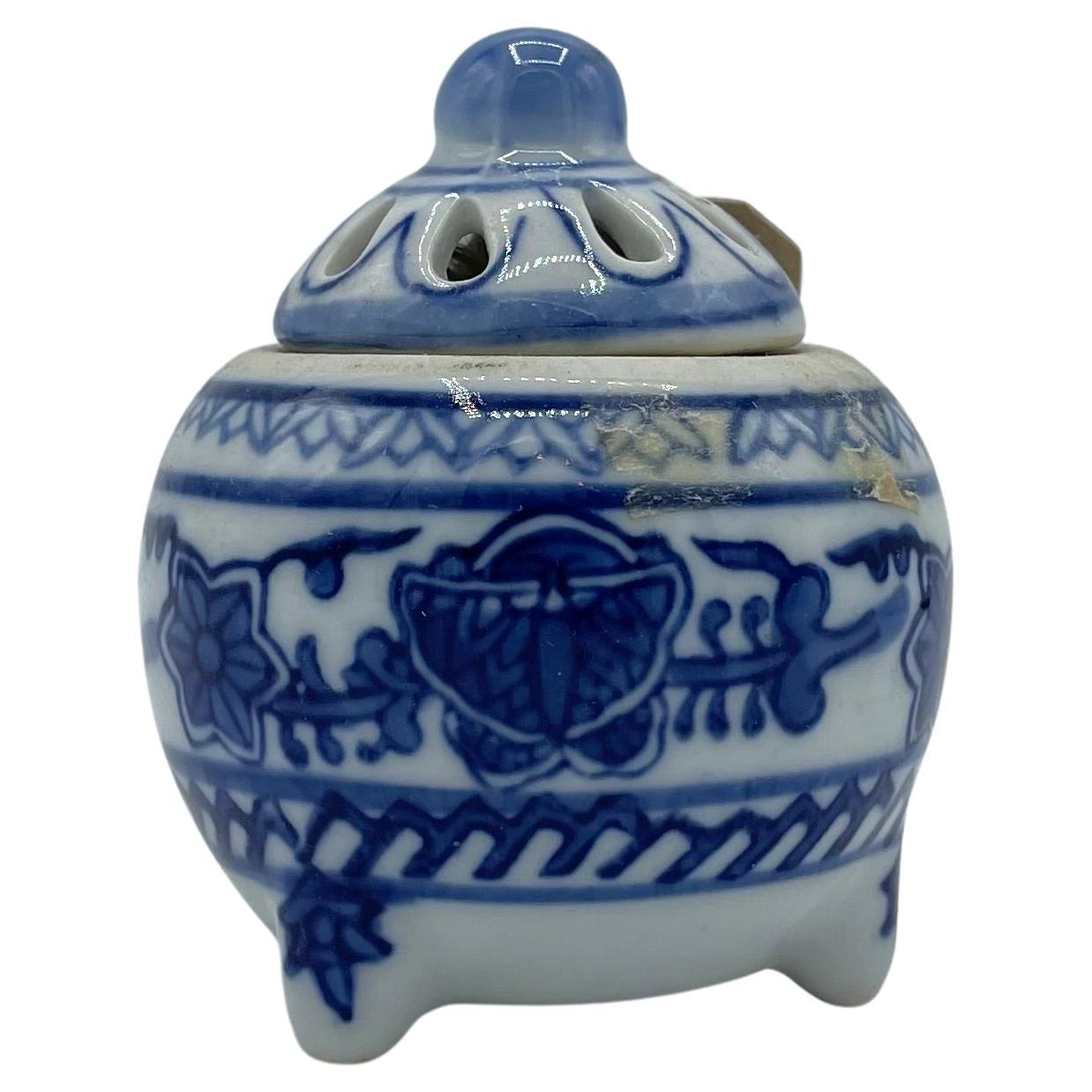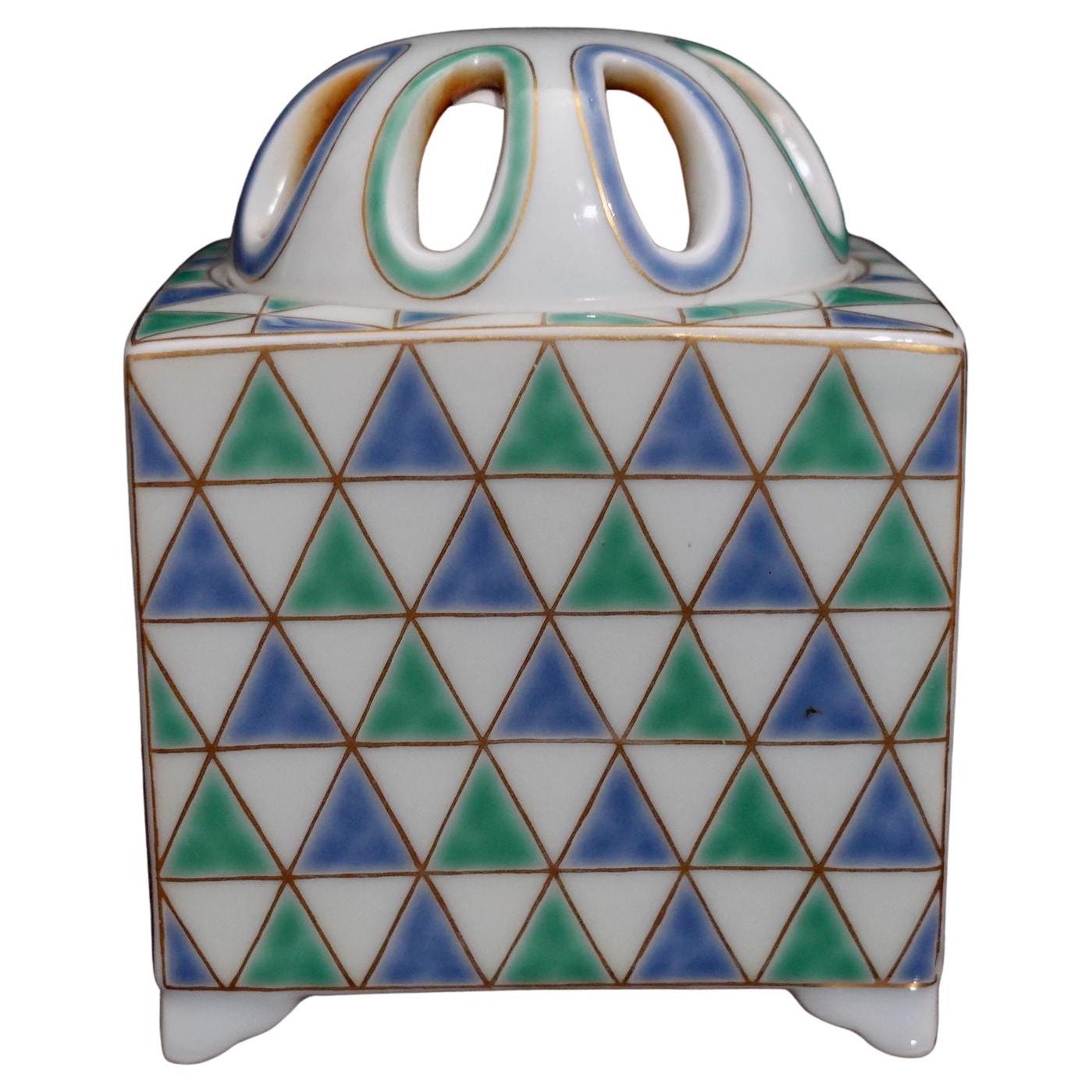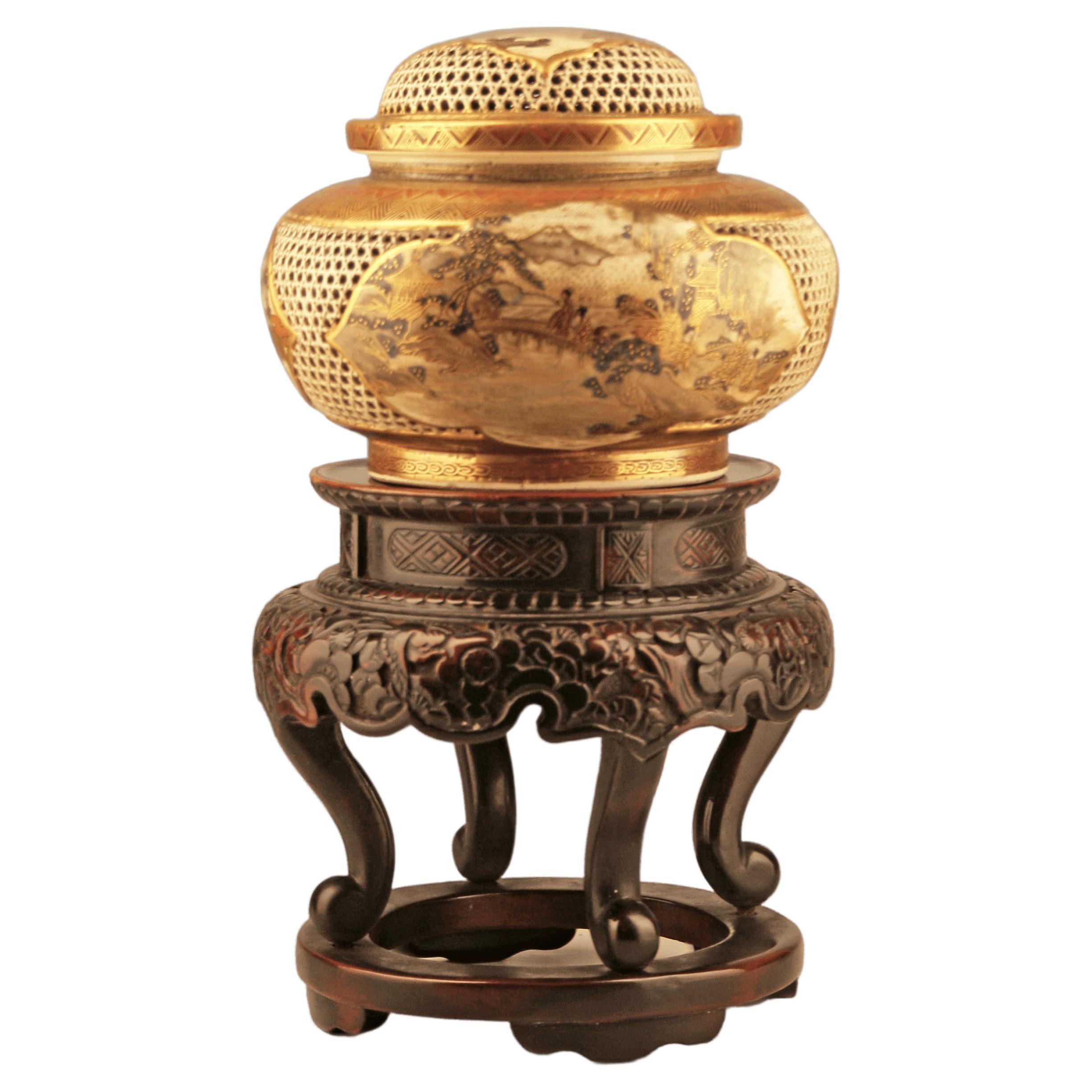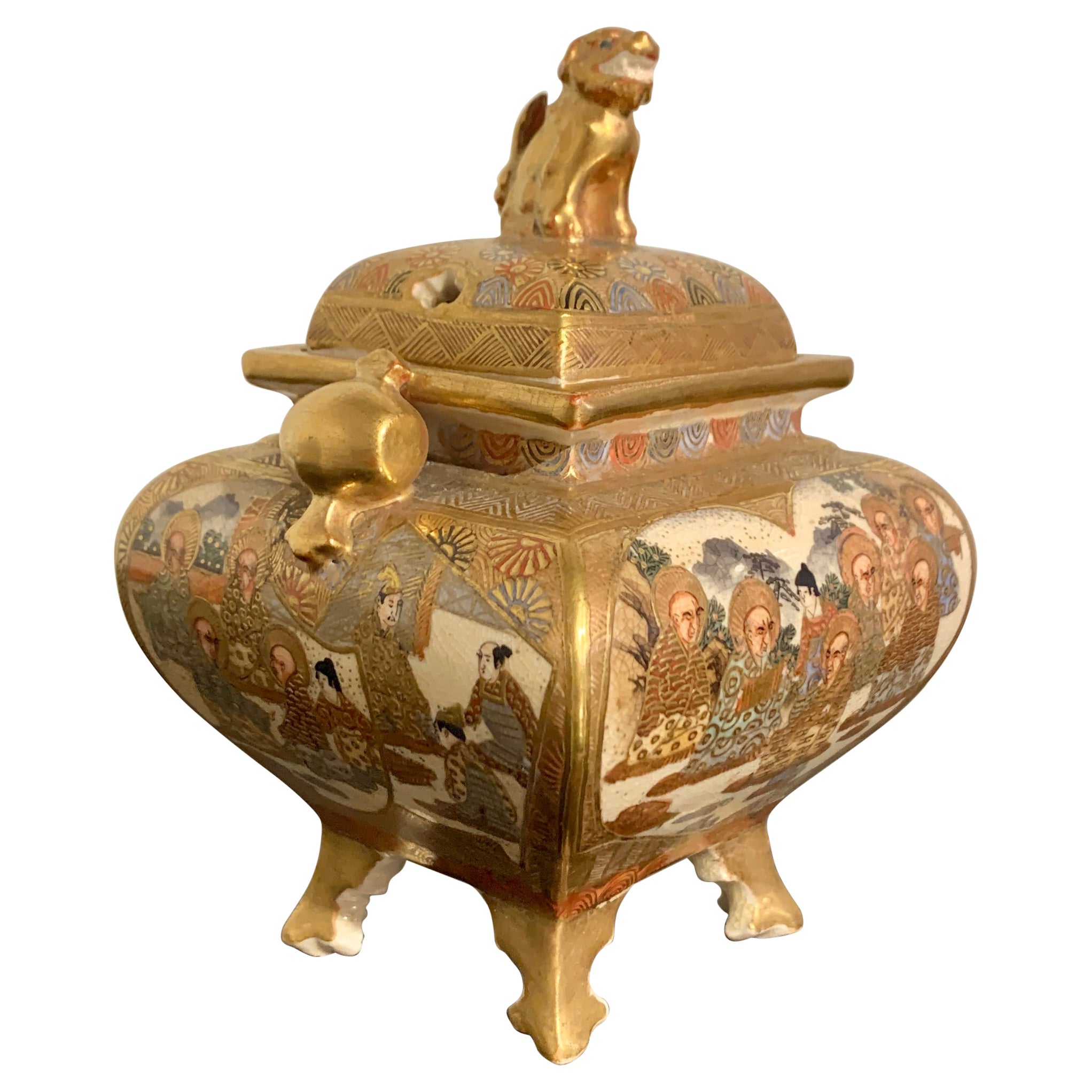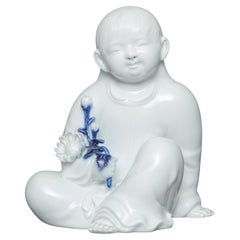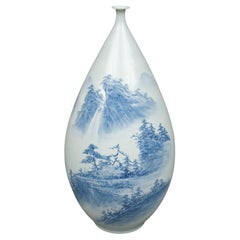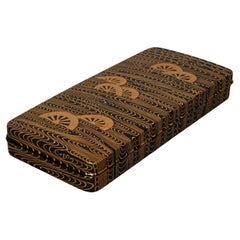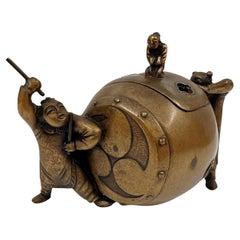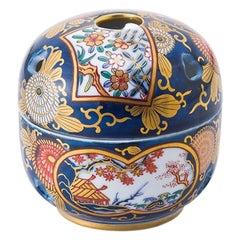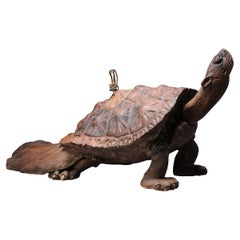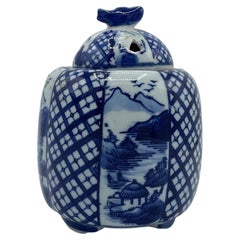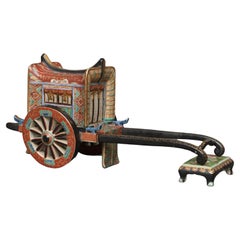
Japanese Kyô’yaki Porcelain Gosho’guruma 御所車 Kôro 香炉 'Incense Burner'
View Similar Items
Want more images or videos?
Request additional images or videos from the seller
1 of 16
Japanese Kyô’yaki Porcelain Gosho’guruma 御所車 Kôro 香炉 'Incense Burner'
Price:$2,599.20
About the Item
- Dimensions:Height: 7.6 in (19.3 cm)Width: 15.56 in (39.5 cm)Depth: 6.23 in (15.8 cm)
- Materials and Techniques:
- Place of Origin:
- Period:
- Date of Manufacture:Edo Period
- Condition:In a very good original condition. Please look at the photos for a condition reference.
- Seller Location:Amsterdam, NL
- Reference Number:Seller: B27801stDibs: LU7165231468622
About the Seller
4.8
Vetted Professional Seller
Every seller passes strict standards for authenticity and reliability
Established in 1996
1stDibs seller since 2022
22 sales on 1stDibs
Typical response time: 22 hours
Authenticity Guarantee
In the unlikely event there’s an issue with an item’s authenticity, contact us within 1 year for a full refund. DetailsMoney-Back Guarantee
If your item is not as described, is damaged in transit, or does not arrive, contact us within 7 days for a full refund. Details24-Hour Cancellation
You have a 24-hour grace period in which to reconsider your purchase, with no questions asked.Vetted Professional Sellers
Our world-class sellers must adhere to strict standards for service and quality, maintaining the integrity of our listings.Price-Match Guarantee
If you find that a seller listed the same item for a lower price elsewhere, we’ll match it.Trusted Global Delivery
Our best-in-class carrier network provides specialized shipping options worldwide, including custom delivery.More From This Seller
View AllJapanese Edo-period gosho’ningyô 御所人形 (palace doll) of plump, seated child
Located in Amsterdam, NL
A charming gosho’ningyô (palace doll) of plump, seated child with a brilliant white skin and a small delicately elegant face, reminiscent of a young noble. The doll is playfully rais...
Category
Antique Early 19th Century Japanese Antiquities
Materials
Paste, Silk, Paint
Japanese porcelain okimono 置物 of a sitting child, by Sakaida Kakiemon XII
By Sakaida Kakiemon Xii
Located in Amsterdam, NL
Exquisite white glazed porcelain figure (okimono) of a sitting child holding a spray of chrysanthemum flowers with cobalt blue glazed leaves in its hand, by Sakaida Kakiemon XII (1878–1963).
The milk white glaze is called nigoshide a type of technique which was not continued at the end of the Edo period, and is the famous rediscovery done by Sakaida Kakiemon XII in 1953.
The bottom signed ‘Kakiemon’.
Sakaida Kakiemon XII assumed the family title on the death of his father, Sakaida Kakiemon XI, in 1917. Earlier he had graduated from the Arita Apprentice School and then studied ceramics with his father. Initially he worked in the traditional Kakiemon style, echoing the work of his forbears in the 17th and 18th centuries. He began working with his own son in 1924, after the future Kakiemon XIII graduated from the Arita Industrial School. Together in 1953 they succeeded in recreating the classical Kakiemon technique for producing a nigoshide milky-white porcelain body. This technique was designated a national cultural treasure meriting preservation and protection by the Cultural Protection Committee in 1955. That same year he exhibited at the 2nd Japan Traditional Crafts Exhibition (Nihon Dento Kogei-ten) for the first time, winning a prize for his entry. In 1958, he exhibited at the World Exposition...
Category
20th Century Japanese Sculptures and Carvings
Materials
Porcelain
Large Japanese Ovoid Porcelain Vase with Blue & White Landscape, by Shigan 芝岩
Located in Amsterdam, NL
Very large ovoid shaped porcelain vase with a beautiful blue and white mountainscape design accentuated by a low relief details. The top of the vase ends in an elegant small neck.
Y...
Category
20th Century Japanese Ceramics
Materials
Porcelain
Japanese Lacquer Suzuribako 硯箱 'Writing Box' by Hattori Toshio 服部俊夫 '1943'
By Hattori Toshio (Shunsho)
Located in Amsterdam, NL
A small Japanese black and gold lacquer suzuribako (writing box) with cartwheels in water, by the artist Hattori Toshio (1943).
Of rectangular form with rounded corners, bearing a lustrous rôiro ground throughout, the exterior sides of the box and exterior of the cover finely decorated in gold and little silver takamaki-e with cartwheels flowing in a dynamically executed body of water with many swirls
and gushes as well as scattered dew drops, the interior tray fitted with a rectangular ink stone and silver suiteki (waterdropper).
The underside signed ‘Toshi’.
With the original wooden tomobako with hakogaki reading Namikuruma makie suzuribako (The
writing box set, with a design of wheels in water), as well as a leaflet written in Japanese with the artist’s biography up to 1987.
Hattori Toshio (b. 1943), art name Hattori Shunsho, was first selected for the Nitten exhibition in Showa 38 (1963). Since then, he has exhibited more than twenty times at the Nitten and other exhibitions, winning numerous prestigious awards. In 1995,
he had an audience with Pope John Paul II and presented the Pope with a lacquer reading table. In 2004, he created the shelves for the guest room of the Kyoto State Guest House of the Government of Japan. He is a member of the Kyoto Crafts Artists Association, the Kyoto Lacquer...
Category
Late 20th Century Japanese Lacquer
Materials
Wood, Giltwood, Lacquer
Unique & Large Japanese Oribe-ware Chair by Suzuki Gorô
By Goro Suzuki 1
Located in Amsterdam, NL
Important and rare Japanese irregular shaped ceramic Oribe-ware chair with various designs in orange, white and black colours by the famous Japanese ceramist Suzuki Gorô...
Category
Mid-20th Century Japanese Ceramics
Materials
Stoneware
Pair of Japanese cast iron chôshi 銚子 (sake kettles) with lacquered lids
Located in Amsterdam, NL
Pair of enticing cast iron chôshi (sake kettles) with a detailed lacquered lid, raised by three low feet. Its rotund body with a subtle embossed design of stylized symbols, like myth...
Category
Antique Early 19th Century Japanese Antiquities
Materials
Silver, Iron
You May Also Like
Antique Japanese Bronze Koro (Incense Burner)
Located in Pomona, CA
Japanese bronze Koro (Incense Burner) in the form of two kids playing drum. This Koro was hand crafted in about early 20th Century with removable top. It has There is a Tai Chi Diagr...
Category
Early 20th Century Japanese Anglo-Japanese Antiquities
Materials
Bronze
$360 Sale Price
25% Off
Japanese Contemporary Ko-Imari Gold Blue Porcelain Koro Incense Burner
Located in Takarazuka, JP
Stunning contemporary Japanese Ko-Imari style porcelain koro or incense burner or jewelry box, hand painted on a beautifully shaped round body in cobalt blue, red and green and gener...
Category
21st Century and Contemporary Japanese Meiji Jewelry Boxes
Materials
Gold
Antique Iwayaki Earthenware Edo Incense Burner of a Turtle 19th Century Japan, J
Located in Amsterdam, Noord Holland
Nicely made and large incense burner or Okimono of a turtle. In earthenware with nice patina. Shimane Prefecture Iwayaki (Nagahama Yaki) Turtle figurine. The head and part of the bac...
Category
Antique 19th Century Japanese Edo Antiquities
Materials
Earthenware
$2,739 Sale Price
20% Off
Japanese Porcelain Incense Burner 1970s LandScape
Located in Paris, FR
This is an incense burner which was made in Japan around 1970s in Showa era. This incense burner is made with porcelain.
Dimensions: 10 x 10 x H12.5 cm
Category
Vintage 1970s Japanese Showa Antiquities
Materials
Porcelain
Japanese Satsuma Incense Burner, Koro, with Silver Lid, Meiji Period, Japan
Located in Austin, TX
A fantastic Japanese Satsuma incense burner, koro, with phoenix and brocade designs and a silver lid, Meiji Period, late 19th century, Japan.
The cens...
Category
Antique 1890s Japanese Meiji Ceramics
Materials
Silver
Japanese Porcelain Incense Burner 1970s Karabito
Located in Paris, FR
This is an incense burner which was made in Japan around 1970s in Showa era. This incense burner is made with ceramic.
Dimensions: 8 x 8 x H10 cm
Category
Vintage 1970s Japanese Showa Ceramics
Materials
Ceramic
Recently Viewed
View AllMore Ways To Browse
Petal Kyoto
Japanese Incense Box
Koro Incense
Imperial Glass Bamboo
Iron Window Box
Bamboo Blinds
Japanese Sudare
Japanese Export 19th
Miniatures Japan
Japanese Wooden Box
Ming Dynasty Blue
Kangxi Blue And White
Chinese Incense
Japanese Hand Painted Jar
Kangxi Blue And White Porcelain
Asian Plate Display
Antique Chinese China Fruit
Asian Jars With Lids
